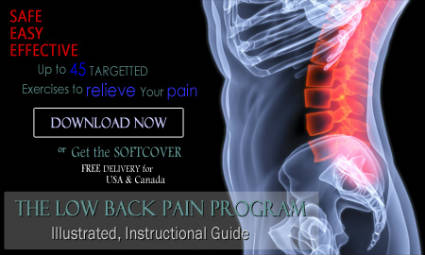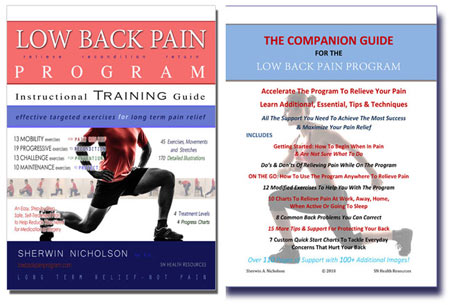Save Your Back by Fixing Your Tight Hip flexors and hamstrings?
Sherwin Nicholson | Updated May 6, 2020
Keeping them in shape is still the best solution for relieving hip pain and protecting your back
Keeping them flexible and well-conditioned will not only help in preventing lumbar issues, but for the prevention of both hip and knee problems. If you neglect them, all three areas will suffer.
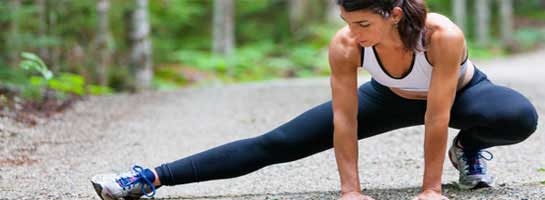
Acute or chronic pain in these areas can be a sign of a medical concern which should be brought to your physician or health care professional.
If your root cause of discomfort is muscular, it is important for you to understand why it is occurring in the first place. With added help and support here, you can take steps to correct the causes and have relief.
We don’t notice how important they are until they hurt
Compared to more obvious muscle groups, hip flexors and hamstrings are not given much attention.
Part of the problem is because unlike the other more visible and muscular areas of the body, we cannot ‘see’ how well or poorly conditioned they have become. It’s when we have pain in the hip joint, the rear of the thighs or other nearby areas that become sore, that we begin to learn more about them.
One thing that we all are guilty of is sitting for far too long. It’s a big problem for both muscle groups because it makes them very inactive. When you do this, you start a cycle of atrophy and strain that you must learn to break.
Can Tight or Painful Hip Flexor or Hamstring Muscles Affect Each Other?
Yes, but pain in one won’t necessarily lead to the other. What they do both affect is the lumbar region of your back.
It’s pretty common to have isolated pain due to muscle weakness and tightness. But over time, these regions become weaker or tighter, and your lower back ends up suffering.
How to Manage Tight Hip Flexors and Pain
How They Contribute to Lower Back Pain
The safety of your lumbar spine (specifically the L1-L5 vertebrae and discs) is directly affected by the action of the hip flexors and hamstrings.
When you have an imbalance, your lower back can easily be subject to strain and injury. Below, you can take action necessary to reverse this imbalance and begin to reduce any risk of damage to your spine.
Learn This Very Effective (and Lumbar Protective) Stretch for Tight Hams
Do This Simple and Easy Stretch for Tight Hip Flexors
Try This Challenging Yet Helpful Stretch to Help Treat Hip Muscle Pain
Are You Hesitant or Lousy with Your Stretches? Take the Lazy Stretcher Test. Then Start Stretching!
If you know just important it is the be physically active, you can begin these 10 Important Exercises for Lower Back and Hip Pain
Tight Hamstrings and Pelvic Tilt Pain
It pretty rare to have chronically tight (or short) hamstring muscles and NOT suffer lumbar pain. Hamstrings are very strong and large muscles which are often poorly maintained. You have probably found that they are very difficult to keep conditioned, no matter your time and effort.
Tight hamstrings and hip flexors will often occur together. Their strong and constant pull can lead to an anterior pelvic tilt. This forward tilt of the pelvis causes an increased pull on the hamstrings which also causes tightness.
Another problem for and unbalanced pelvic tilt that can hurt, is from the hip flexor known as the psoas (pronounced “so-as”) muscle.
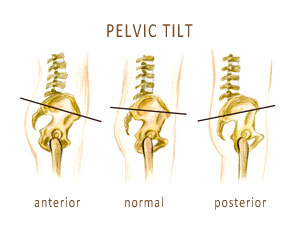
Unlike the hamstrings, which are not connected to your lumbar vertebrae, the psoas is directly attached to each of the five lumbar vertebrae. You can see this is figure 6.1 below. Please see for further details.
To maintain a healthy and safe curvature for your spine, ALL of the muscles which are located in front and behind the pelvis must act effectively and function in a balanced fashion whenever you’re actively moving.
In doing this, they do the job to keep the pelvis in a neutral and safe position. This ‘neutral tilt’ is necessary to maintain evenly distributed pressure on the vertebral discs so you won’t have any injury.
Try This Exercise to Help Relieve Your Anterior Tilt Discomfort
The Hip Flexor Group
In figure 6.1, we see that they have various functions, especially where some muscles within the group cross over both the hip and knee joints. The group consists of the iliopsoas, rectus femoris, sartorius, tensor fasciae latae, pectineus, gracilis, adductors and a gluteal muscles.

It is the iliopsoas muscle which has the strongest pull on our spine. It is attached to the L1-L5 and T1 vertebrae.
A tight psoas (the part of the iliopsoas that connects to the lumbar spine) can pull on the spine and compress the discs and vertebral joints associated.
Poor Conditioning and Lumbar Pain
This is a very strong muscle. If it is always tight, disc compression is higher along with soreness. Stretching your psoas is vital to back health.
A chronic state of shortening can also worsen your anterior pelvic tilt which is very harmful to your discs, especially within the L5-S1 region.
A tight iliacus muscle (part of the iliopsoas) is also part of having a tight psoas. In addition to this, the other muscles listed above can also affect your anterior pelvic tilt such as your rectus femoris.
At the Workplace and Home
Most people do not have any serious conditions other than symptoms of fatigue in the lower back after extended times of sitting. They can usually cope with this temporary discomfort and will recover quickly.
However, daily activities which involve extended and prolonged periods of inactivity or even over activity will cause muscle imbalances and chronic pain.
Hamstrings
Many symptoms of lower back pain can begin with tight hip flexors or hamstring muscles. It is rare to find a person who does not have tightness in these muscles, especially the hams.
When these muscles are too tight, they prevent the pelvis from tilting forward in a smooth manner, simultaneously with the back when bending forward to neutral. As a result, you will mistakenly bend your spine, rather than at the pelvis to compensate for the lack of flexibility.
Tight hamstrings are often very uncomfortable to stretch, and we find ourselves trying to avoid it as much as possible.
We tend to favour bending at the spine rather than tilting our hips because of the discomfort we feel from tight hamstrings.
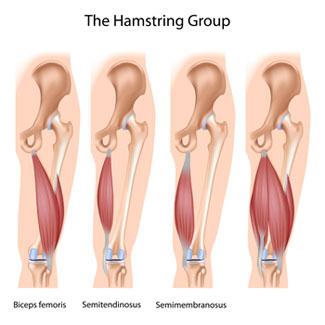
The Hamstring Group
The three major muscles of this group as seen in figure 6.2 are the biceps femoris, semitendinosus, and the semimembranosus muscles. These muscles are very challenging to stretch and require sincere effort, time and patience to achieve long-term results.
The tightness of a muscle is usually the result of lifestyle but can sometimes be a natural condition in an individual. The better solution, however, is always to lengthen the muscle with stretching.
How Lifestyle Worsens the Hamstring Group
Extended periods of sitting, as in the cases of driving, office work, sitting in front of the TV or even extended periods of studying will cause tightness in the hip flexors and hamstrings.
During these activities, the muscles are in their shortened positions, with blood circulation and nerve activity within the tissue also being compromised. This not only produces a tight and shortened muscle but also contributes to overall weakness and decreased responsiveness in that muscle.
During upright and active periods, these tight and weak muscles are sometimes required to perform the job of stronger and more lengthened muscles.
This is likened to using a stiff, old rubber band instead of a new, more elastic one. When these muscles are required to perform daily work in the upright position, they will do so, but with added strain on the lumbar spine and discs.
Poorly Conditioned Hamstrings Lead to Spinal and Muscular Issues
A lengthened and stronger muscle can extend and flex the legs with minimum effect on the normal curvature of the spine during activity.
Short, tight and weak muscles will exhibit much more pull, tension and fatigue on the lumbar spine and pelvis as they are no longer as efficient at relaxing and lengthening at times needed during exertion.
When hip flexors and hamstrings pull on the spine and pelvis with increased force and tension, the pressure on different sides on the discs increases dramatically and causes degeneration.
This causes too much movement and compression on your spine and discs. They become progressively worn over time and may lead to disc and vertebral problems.
The Connection Between Healthy Hip Activity and Lumbar Safety
The fact that we must ‘keep our spine straight and bend at the hips and knees’ is not really news to us at all, especially for back sufferers.
What we must understand is that there is a direct relationship and correlation with your lumbar spine and your hips that cannot be overemphasized. The more that you use your hips and legs, the less work your spine must perform.
Remember this One Simple Rule to Use Your Hips More and Reduce Lumbar Pain
Getting the Right Help for Hip Flexor and Hamstring Pain
To reduce the discomfort, these two muscle groups should be exercised in many different ways. This requires several different positions, stretches and movements. It is usually insufficient to perform basic, standard stretch and strengthening methods since they don’t necessarily target ALL of the muscles of concern.
Try this Stretch to Help With Stubborn, Tight Hamstrings
Follow this stretch technique for healthier hamstrings
The Low Back Pain Program eBook teaches specific exercises that specifically target the hip flexors and hamstrings among other muscles groups involved. The exercises help the muscles and joints to move in a multitude of directions and positions. These methods teach you how to SAFELY stretch them without risk to your spine.
You can learn better methods of safer stretching than the standard “toe touching” way that is, unfortunately, harmful to your back.
This variation is key to relief. The Instructional Guide provides careful and progressive methods which allow them to function more effectively and help to reduce the unnecessary stress and burden on the lumbar spine.
“I wanted to let you know that your program has made me have unbelievable breakthroughs and in only two days. I now realize that my pelvis has been tilting back and up as well as to the right side. Your hip unlocking exercises in particular made me feel something I forgot I could feel. I’m 22 and was having a lot of spinal issues and joint pain which was causing immobilizing suffering but this has already made me have unbelievable relief and hope. You’re a real life saver”
“This book is a lifesaver for anybody with chronic lower back pain. I have suffered from lower back pain for 6-7 years and nothing I tried (physical therapy, yoga, swimming) provides any meaningful lasting relief. Found this book about 10 days ago and have been following the exercises in this book; it is like magic and I have been pain-free for the last week. After many years, I am sleeping well at night and wake up energized and ready to take on the day.”
Over 170 Step by Step Images
4 Treatment Levels
64 Pages with Detailed Descriptions
7.14 Mb PDF, 60 day refund guarantee.
$8.97 US, Instant Download (PDF), Email Support
$5.97 US, For E-Readers
Get more help here:
- How to Use the eBook (Where to begin? How many per day? How long?)
- What are the exercises that I will be doing and what is in the book?
- What have other customers thought about the book?
References:
- Treat Your Own Back – 2011. Robin McKenzie. Gordon Soules Publishers. 9th Edition. www.gordonsoules.com
- Strength Training Anatomy – Frederic Delavier. 2006. QM151.D454. 2nd edition. Human Kinetics Publishing.
- www.nih.gov (The National Institutes of Health)
- LBP – Eric R. Castillo Daniel E. Lieberman Evol Med Public Health (2015) 2015 (1): 2-3. DOI: https://doi.org/10.1093/emph/eou034 Published: 10 January 2015 https://academic.oup.com/emph/article/2015/1/2/1795271/LBP

